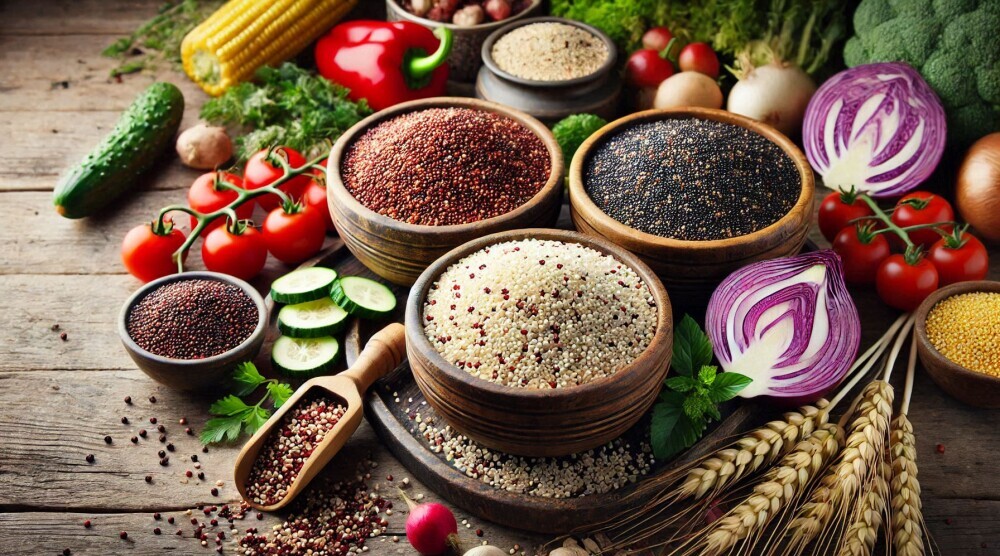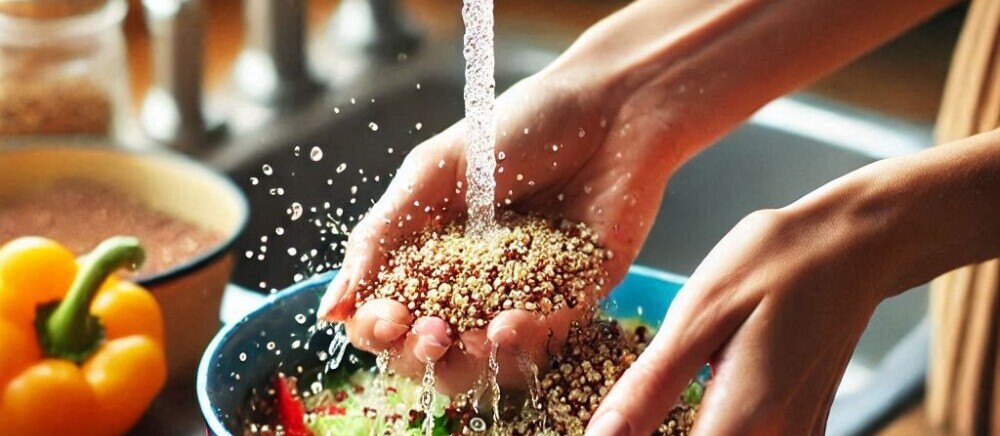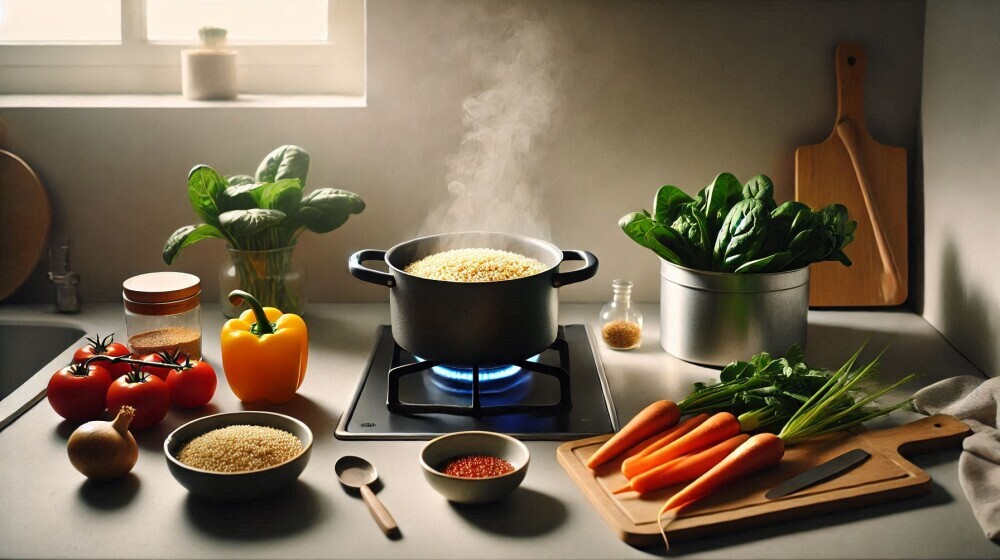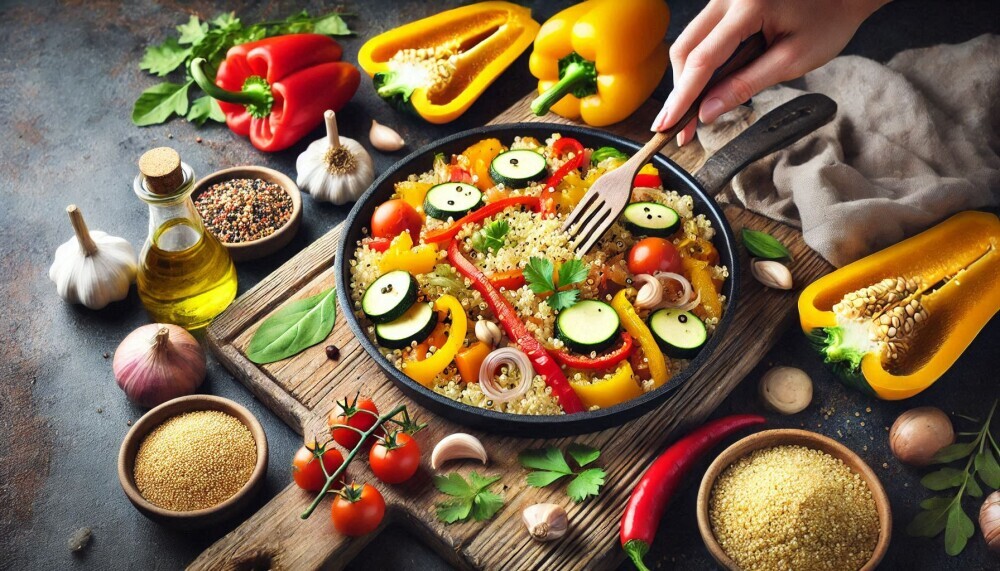Quinoa just seems to be everywhere these days, and it’s not hard to see why it’s become such a popular grain substitute. Originating from the Andean region of South America, it was cultivated by ancient civilizations like the Incas, who revered it as a sacred crop. Modern appreciation for quinoa mainly stems from its incredible nutritional benefits.
Unlike most plant foods, quinoa is considered a complete protein source. This means it contains all nine essential amino acids that our bodies can’t produce on their own. It’s pretty rare in the plant world, making quinoa a fantastic protein source, especially for those on plant-based diets. Plus, it’s packed with fiber, which aids digestion and keeps you feeling full longer.
Quinoa comes in a few different varieties, including white, red, and black. Each offers slightly different textures and flavors, but they all bring the same nutritional punch to the plate.
- White quinoa is the most common and tends to cook up a bit fluffier.
- Red and black varieties, however, are often used in salads because they hold their shape better once cooked.

Embracing quinoa in your diet can provide a wealth of health benefits beyond just protein and fiber. It’s also a good source of important vitamins and minerals such as magnesium, iron, and potassium. On top of that, it’s gluten-free, making it suitable for those with gluten sensitivities or celiac disease.
Whether you’re preparing a hearty breakfast, a quick lunch, or an elaborate dinner, quinoa can be a vital component of a balanced and healthy diet.
The Importance of Rinsing Quinoa

Rinsing quinoa might seem like an unnecessary step, but it makes a world of difference in taste. This grain naturally has a bitter-tasting coating called saponins, which serves to keep pests away as it grows. While effective for quinoa in the wild, these saponins don’t do any favors for flavor in the kitchen.
To eliminate this bitterness, it’s essential to give quinoa a good rinse before cooking. You’ll want to use a fine mesh strainer to prevent any of those tiny grains from slipping through. Just hold it under cold running water for a couple of minutes, and you’re good to go.
This simple rinse can transform quinoa from something bitter into a delightfully nutty base for your dishes. Not only does it improve the taste, but it also helps in achieving a better texture once cooked.
Some folks skip rinsing because they’ve bought pre-rinsed quinoa or sometimes they just didn’t know about it. However, a quick rinse is always a safe bet, ensuring any residual saponins get washed away.
Rinsing sets the stage for delicious and versatile quinoa dishes, whether you’re aiming for salads, side dishes, or something entirely new. Taking this short step truly elevates the quinoa experience in your meals.
Mastering Quinoa Cooking Methods

Cooking quinoa might seem intimidating at first, but once you’ve got the right method down, it becomes second nature. Let’s break down a few popular ways to get that perfectly cooked pot of quinoa every time.
Stovetop
- The stovetop is a classic, reliable method.
-
- Start with a one-to-two ratio of quinoa to water (e.g., one cup of quinoa to two cups of water).
- Bring it to a boil, then reduce the heat, cover, and let it simmer for around 15 minutes.
- Once it’s done, let it sit off the heat, covered, for five minutes. This is crucial for absorbing any remaining water and reaching the perfect texture.
Instant Pot
- For those who love fast and efficient cooking, the Instant Pot is a game-changer. Brilliant for multitaskers, it frees up stove space and time.
-
- Simply add a one-to-one ratio of quinoa and water, lock the lid, and set it to cook on high pressure for one minute.
- After it’s done, let the pressure release naturally for ten minutes before opening.
Rice Cooker
- Using a rice cooker brings its own set of perks, especially for those who prefer a hands-off approach.
-
- Use a one-to-two ratio as with stovetop cooking. Just set it and forget it; the rice cooker will switch to ‘warm’ mode once cooked, ensuring perfectly fluffy quinoa.
Regardless of the method you choose, remember not to lift the lid too soon. That gentle steaming action is what gives quinoa its signature fluffy texture and prevents any unpleasant crunch.
Each cooking method offers its own convenience and flavor. Experimenting with these techniques allows you to find what works best for your lifestyle and recipe plans.
Elevating Flavors with Perfect Pairings

Quinoa’s mild taste makes it an excellent canvas for a variety of flavor pairings. The right combination of herbs, spices, and vegetables can take your quinoa from basic to brilliant.
Herbs like cilantro and parsley add a fragrant freshness that complements quinoa’s nuttiness. Lemon zest or lime juice can brighten up the dish, infusing a refreshing zest.
Spices such as cumin, coriander, and turmeric introduce warm, earthy tones, making quinoa feel heartier. Don’t be afraid to experiment with a dash of chili powder or smoked paprika for a bit of heat and depth.
Quinoa loves company—pair it with vegetables like bell peppers, roasted butternut squash, or spinach to add color and nutritional value. Mixing in proteins like chickpeas, black beans, or grilled chicken can create a more balanced meal whirling with diverse textures.
When mixing and matching, consider the harmony of flavors. A balance of sweet, savory, and spicy helps each ingredient shine while fully utilizing quinoa’s versatility.
Exploring these pairings opens up an array of vibrant meal possibilities, ensuring your quinoa dishes are always exciting and full of flavor. No seed oils in sight of course.
The Art of Fluffing Quinoa

Fluffing quinoa might sound like just a step in the recipe process, but it plays an essential role in achieving that light and airy texture everyone aims for. Once your quinoa is cooked, it’s time to fluff it up with a fork, and there’s a good reason behind it.
As quinoa cooks, the grains absorb water and swell. Fluffing separates these grains, preventing clumps and creating a desirable, tender bite. This small effort enhances the dish’s overall texture, making it more appealing for various meal applications. Same idea as rice.
To fluff effectively, use a fork rather than a spoon. Gently rake through the quinoa, lifting and turning the grains. This helps to aerate them and prevents compacting, which can lead to a soggy consistency.
One common mistake is fluffing too vigorously, which can squash the grains. Aim for a gentle approach to maintain the integrity of the quinoa.
Getting the fluffing part right can transform your quinoa dishes, making them more enjoyable to eat and visually appealing. This technique ensures every bite is as delightful as intended.
Optimal Storage Tips for Cooked Quinoa
Storing cooked quinoa properly is key to maintaining its freshness and taste over time. Once you’ve cooled down that fluffy quinoa, you want to keep it in an airtight container. This simple step prevents it from drying out or absorbing any unwanted odors from the fridge.
- Cooked quinoa remains fresh in the refrigerator for about five to seven days. Make sure to date your containers so you can keep track of its freshness. If you’re planning to store quinoa for longer, the freezer is your best bet.
- Freezing quinoa is straightforward. Spread it out on a baking sheet to freeze individually first, then transfer it to a zip-top freezer bag. This way, you can take out only the amount you need, reducing waste. Quinoa can last up to six months in the freezer when stored this way, maintaining both quality and flavor.
- When it comes to reheating, make sure the quinoa is thoroughly thawed if frozen. Use a microwave or a pan on the stove with a splash of water to prevent it from drying out during reheating.
These storage tips ensure that you have ready-to-eat quinoa available, saving time and effort for your future meals. Preparing larger batches is a smart way to incorporate quinoa into your weekly diet without the hassle of cooking it frequently.
Beyond the Basics – Creative Uses for Quinoa
Quinoa is more than just a side dish; it can be the star of many creative meals. Its versatility opens up a world of culinary possibilities, encouraging you to think outside the traditional bowl.
Quinoa salads are a vibrant way to mix textures and flavors. Toss in some cherry tomatoes, cucumber, a sprinkle of feta cheese, and a dash of lemon vinaigrette for a Mediterranean twist. These salads are not only delicious but also incredibly satisfying and nutritious.
Transform quinoa into hearty bowls for breakfast or lunch. Combine it with ingredients like avocado, poached eggs, black beans, and a dash of hot sauce for a savory start to your day. You can even explore sweet breakfast bowls by adding almond milk, fresh berries, and a sprinkle of cinnamon.
For those with a sweet tooth, quinoa can be surprisingly delicious in desserts. Incorporate it into baking by using quinoa flour or adding cooked quinoa into cookie or muffin batter. It adds a unique texture and boosts the nutritional profile of your desserts.
Explore global cuisines by using quinoa as a base. Swap out rice for quinoa in your favorite stir fry, use it as a base for curry, or craft delicious quinoa tacos. The grain’s adaptability makes it easy to fuse different culinary styles.
These creative uses of quinoa invite you to experiment in the kitchen, turning this simple grain into a versatile ingredient that can complement every meal. Try out new ideas and enjoy the healthy benefits along the way.
Feel free to try adding your twist in any way as long as it HATES ON SEED OILS!
Want to learn more about what the seed oil hate is all about? Find out here!



